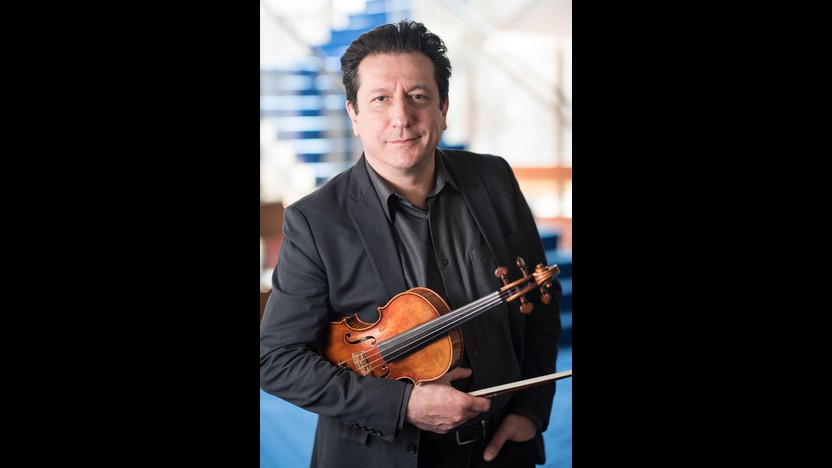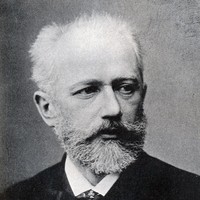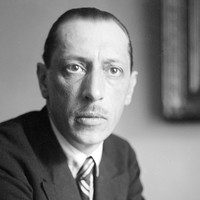Mozart, Tchaikovsky and Haydn



After Tchaikovsky’s disastrous marriage and subsequent mental breakdown in 1877, a visit to Switzerland that November did wonders for his health and spirit. He returned the following March for another retreat, this time joined by Iosif Kotek, a violinist and former composition student for whom Tchaikovsky had developed a strong (and not entirely platonic) affection. Together they played through major works of violin repertoire, a process that sparked in Tchaikovsky a “burning inspiration” to compose a violin concerto, as he explained in a letter to his patron, Nadezhda von Meck.
Tchaikovsky was unhappy with his first attempt at the concerto’s slow movement, so he set it aside and replaced it with a Canzonetta. Still, he liked the original material enough to return to it several weeks later, when he recast it as a Méditation for violin and piano and added two more movements to form a suite. He finished the project at Brailov, the Ukrainian estate owned by von Meck; as he described it in a letter to his sister, it was “a palace in the literal sense of the word…the furnishings are luxurious, apart from polite and affectionately obliging servants I see no human figures and no one comes to make my acquaintance, the strolls are charming, and at my disposal I have carriages, horses, a library, several pianos, a harmonium, a mass of sheet music—in a word, what could be better?”
Tchaikovsky simply titled the suite Three Pieces, but he made the unusual step of dedicating the work to a place—Brailov—instead of a person. His publisher supplied the title Souvenir d’un lieu cher (Memory of a Dear Place) for a posthumous publication in 1896, which also introduced an orchestral arrangement of the piano part by a younger composer, Alexander Glazunov.
The opening Méditation is the longest of the movements, and it is easy to see how it might have been considered for use in a violin concerto, especially with Glazunov’s warm orchestration. The violin initially restrains itself to songlike phrases in a deep, contralto range, but in time it becomes more florid and expansive, until it climbs to its highest summit in the sweet closing passage.
The Scherzo lightens the mood with a bouncing stream of staccato phrases, but even this palate cleanser waxes poetic in a substantial contrasting passage marked Con molto espressione e un poco agitato (With great expression, and slightly agitated). Tchaikovsky referred to the closing Mélodie as a “song without words,” and it is indeed one of the most singable melodies in the violin repertoire.
Aaron Grad ©2015

Haydn’s patron, Prince Nikolaus Esterhazy, was an avid musician and a true supporter of the arts, but he kept his Kapellmeister on a tight leash. Haydn initially had very little freedom to spread his music outside of the court, and he spent as many as ten months of each year sequestered at the prince’s isolated summer palace, producing dozens of opera performances and other entertainment. In 1779, Haydn finally negotiated a new contract that gave him more leeway to compose and publish independently, and soon his music was attracting followers throughout Europe.
One foreign admirer was a young French count, Claude-François-Marie Rigolet, who commissioned six symphonies that Haydn composed in 1785 and 1786. These “Paris” Symphonies earned Haydn the handsome sum of 25 louis d’or each, plus additional fees for publication. (By comparison, Mozart earned only 5 louis d’or for his “Paris” Symphony from 1778.) On the success of the six original works for Paris, the same patron asked Haydn for another set of three symphonies, which became Nos. 90-92, Haydn’s last symphonies before his twelve legendary works for London.
Haydn’s “Paris” symphonies capitalized on the large orchestra employed for the Concerts de la Loge Olympique, an ensemble that far outnumbered the private Esterhazy ensemble. It must have had quite an impact when the orchestra struck up the first performance of the Symphony No. 83 in 1787, conducted by its famous mixed-race maestro, Joseph Bologne, Chevalier de Saint-George. The symphony enters with the entire orchestra cranked up to a fortissimo dynamic, and the G-minor harmony is made all the more striking when the melody lands on a pungent C-sharp in the second measure. The secondary theme, by contrast, is full of humor and good cheer, with clucking grace notes and a honking oboe solo that earned this symphony its nickname, “The Hen.”
The Andante movement, built around a motive of a repeated note, is incredibly smooth and placid, except for a few surprisingly loud and jolting outbursts. The Menuet continues in high spirits; here the joke is a matter of displaced phrasing, with the main gesture of three descending notes entering on different beats. The Finale has its own bold strokes, including a passage in the development section that has the first violins coursing in constant motion while everyone else hammers out accented chords. Several incongruous pauses near the end show that Haydn’s wit is just as effective when applied gently.
Aaron Grad ©2015

As of 1902, Igor Stravinsky was a young law student whose musical pursuits amounted to some piano lessons and a year of private theory training. As he began to think more seriously of a life in music, he arranged to show some of his scores to Nikolai Rimsky-Korsakov, the leading teacher and tastemaker in Saint Petersburg. Rimsky-Korsakov accepted Stravinsky as a private student, steering him away from the conservatory, where the untrained 20-year-old would have stuck out.
It was at one of the regular Wednesday gatherings at Rimsky-Korsakov’s house where Stravinsky introduced the Pastorale, a song without words for violin and piano from 1907, which was sung by (and dedicated to) Rimsky-Korsakov’s daughter, Nadezhda. Several months later, the Pastorale was featured on a Saint Petersburg series called Evenings in Contemporary Music, marking Stravinsky’s public debut as a composer.
Stravinsky still thought enough of his early Pastorale that he arranged it in 1923 for soprano with a chamber ensemble of oboe, English horn, clarinet and bassoon. Then he dusted it off again in 1933, when he was preparing recital repertoire for the tours he undertook with violinist Samuel Dushkin, substituting the violin for the soprano in both versions of the work.
The short Pastorale, with its droning harmonies, dry textures and folk-like melodies decorated with sensuous trills, offers a glimpse into Stravinsky’s neoclassical future. The scholar Richard Taruskin made a compelling case that Stravinsky, a few months before composing the Pastorale, likely attended the Saint Petersburg debut of harpsichordist Wanda Landowska, giving him his first true taste of a musical tradition that would figure so prominently in his future works.
Aaron Grad ©2015
 Watch Video
Watch Video
Wolfgang Amadeus Mozart spent much of his youth traveling through Europe and performing in circumstances arranged by his enterprising father, Leopold. Their last major trip together took them through Italy for over a year, until they returned to Salzburg in December of 1771. This period marked a turning point for Mozart, for at fifteen he was getting a little old to be paraded around by his father as a child prodigy. During the next years in Salzburg, despite tensions with a new Archbishop (who controlled the court’s musicians) and an uncertain professional future, Mozart composed mountains of music, and in the process he matured from a precocious youth to the genius we now recognize.
About half of Mozart’s symphonies dated from the period between 1771 and 1774, including the Symphony No. 29 in A that he wrote near the end of that surge, at the age of eighteen. To begin the Allegro moderato first movement, a distinctive theme built around downward leaping octaves glides over a gentle chorale accompaniment at a piano dynamic. As might be expected, this material repeats at a firm forte dynamic, but the surprise is that it adds a layer of contrapuntal complexity, with the low strings chasing the violins on the same material but delayed by two beats. This heightened focus on layering and counterpoint runs throughout the symphony, as in the Andante second movement, which waits only four measures before adding a bouncing countermelody to the dignified violin theme.
After the slow movement’s hush of muted strings, the Minuet turns more playful, incorporating dramatic dynamic changes and tongue-in-cheek fanfares. To close the symphony, the Allegro con spirito finale re-integrates ideas from the opening movement, including a new theme constructed from octave leaps. Call-and-response phrases and melodic imitation add to the work’s abundance of sophisticated counterpoint, signaling a new summit in Mozart’s symphonic craft.
— © Aaron Grad
Aaron Grad ©2019
Get driving directions and find nearby parking.
Find dining options close to the venue.
View seating charts to find out where you'll be seating.
Get driving directions and find nearby parking.
Find dining options close to the venue.
View seating charts to find out where you'll be seating.
